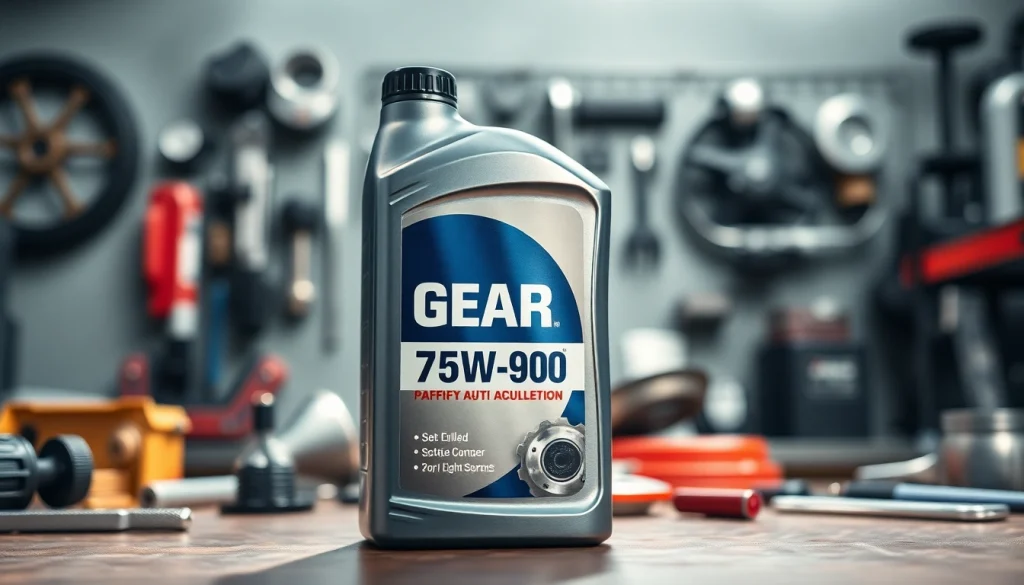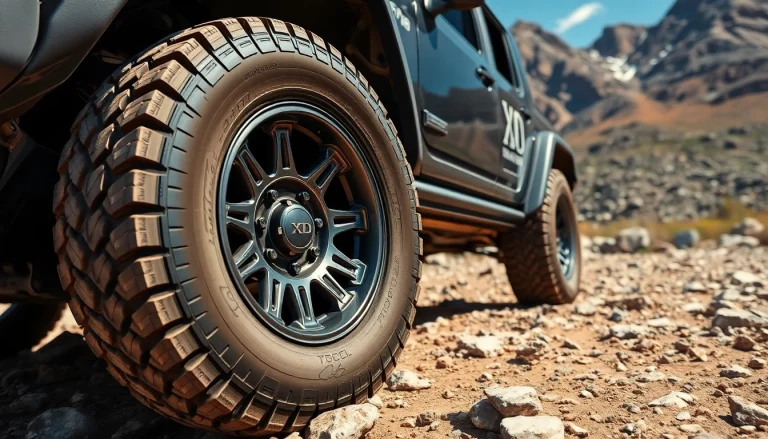
Introduction to Gear Oil 75W-90
Gear oil is a specialized lubricant designed to enhance the performance of differentials, manual transmissions, and transfer cases in vehicles. Among the various grades available, gear oil 75W-90 has gained popularity due to its balance between viscosity and thermal stability. This article delves into the unique characteristics, applications, and best practices for using 75W-90 gear oil, equipping you with knowledge to keep your vehicle running smoothly.
What is Gear Oil 75W-90?
Gear oil 75W-90 is a multi-viscosity lubricant, meaning it is formulated to perform effectively across a range of temperatures. The “75” indicates the oil’s viscosity when cold (the “W” stands for winter), while the “90” relates to its performance at higher temperatures. This oil is predominantly used in automotive applications, particularly for differentials and manual transmissions.
Key Features and Benefits
The distinct features of 75W-90 gear oil include:
- Temperature Flexibility: Its multi-viscosity rating allows it to maintain performance in both low and high temperatures, providing excellent lubrication even under diverse conditions.
- Wear Protection: Formulated with additives that reduce friction and wear, enhancing the lifespan of gear components.
- Anti-foaming Properties: Helps in maintaining a stable lubricant film across gears, which is crucial for high-speed applications.
- Compatibility: Suitable for a wide range of vehicles, including cars, trucks, and SUVs, making it a versatile choice for many drivers.
Common Applications of Gear Oil 75W-90
Gear oil 75W-90 is primarily used in:
- Manual Transmissions: Offers necessary lubrication to prevent grinding and wear of gears.
- Differentials: Protects essential components in both front and rear differentials, especially in all-wheel and four-wheel drive vehicles.
- Transfer Cases: Provides lubrication for the transfer case, ensuring smooth operation during shifting.
Choosing the Right Gear Oil 75W-90
Understanding Viscosity Ratings
Viscosity ratings provide essential information about the fluid’s performance under various temperature conditions. The first number (75) denotes the oil’s viscosity in cold conditions, indicating it remains relatively thinner for easier flow in colder climates. The second number (90) shows how thick the oil is at higher temperatures, ensuring proper protection and lubrication when components expand due to heat.
Comparing Conventional vs Synthetic Options
When selecting gear oil 75W-90, consumers often face a choice between conventional and synthetic variants:
- Conventional Gear Oil: Typically cheaper and suitable for drivers who follow regular maintenance schedules. However, it may require more frequent changes and can break down sooner under extreme conditions.
- Synthetic Gear Oil: Offers superior protection against oxidation and breakdown. Ideal for high-performance vehicles or extreme driving conditions. While more expensive, it often provides extended service intervals, making it cost-effective over time.
Recommendations Based on Vehicle Type
Choosing the right gear oil can depend heavily on the type of vehicle and its usage:
- Standard Vehicles: A conventional 75W-90 may suffice for everyday driving.
- Performance Cars: Synthetic 75W-90 is recommended for enhanced protection at higher performance levels.
- Off-Road Vehicles: Synthetic formulations often handle extreme pressures and temperatures better, providing a durability advantage.
How to Use Gear Oil 75W-90 Effectively
Step-by-Step Application Guide
Using gear oil 75W-90 effectively involves several key steps:
- Check Owner’s Manual: Always refer to your vehicle’s owner manual to determine the appropriate oil specifications and change intervals.
- Drain Old Oil: Ensure the draining process takes place when the oil is warm to help it flow out smoothly.
- Inspect the Gasket and Seals: Before adding new oil, inspect seals to prevent leaking.
- Add New Oil: Use a funnel to prevent spills and ensure you add the recommended amount.
- Check Levels: After adding, run the vehicle briefly and check fluid levels. Add oil as necessary.
Common Mistakes to Avoid
A few common mistakes to watch for include:
- Using incorrect viscosity: Always adhere to the recommended viscosity rating for your vehicle.
- Ignoring change intervals: Neglecting regular oil changes can lead to increased wear and component failures.
- Overfilling: Too much gear oil can cause pressure buildup and leaks, ultimately damaging the vehicle components.
Maintenance Tips for Optimal Performance
To maximize the performance of your gear oil:
- Regularly check the oil level and condition.
- Change the gear oil according to the manufacturer’s recommendations, which is often every 30,000 to 60,000 miles.
- Use high-quality gear oils that meet or exceed industry specifications.
Comparative Analysis: Gear Oil 75W-90 vs. Others
Gear Oil 75W-90 vs. 80W-90
Gear oil 75W-90 is often compared to 80W-90, another popular viscosity. The key differences lie in their performance under temperature variations:
- Cold Weather Performance: 75W-90 performs better in cold conditions, flowing more easily at lower temperatures.
- High Temperature Performance: 80W-90 may offer slightly better stability in high temperatures but is generally thicker, which can be a disadvantage in colder climates.
Performance Insights vs. 75W-140
The comparison between gear oil 75W-90 and 75W-140 illustrates significant differences in operating conditions:
- Thickness: 75W-140 is thicker at higher temperatures, providing enhanced protection for high-load applications.
- Common Usage: 75W-90 is suited for most vehicles, while 75W-140 is typically reserved for heavy-duty trucks or high-performance applications.
Consumer Preferences and Market Trends
Market insights illustrate a growing preference for synthetic gear oils due to their superior performance and longevity. As vehicles become increasingly advanced, manufacturers encourage the use of synthetic oils to comply with modern specifications and achieve better fuel efficiency.
Conclusion and Final Thoughts on Gear Oil 75W-90
Summary of Key Takeaways
Gear oil 75W-90 is an essential lubricant that offers exceptional protection and performance in various automotive applications. Its unique characteristics make it a preferred choice for many car enthusiasts and everyday drivers. Understanding the distinctions between various gear oils and following best practices will ensure optimal vehicle performance and longevity.
Future Trends in Gear Oil Technology
The advancement in gear oil technology is ongoing, with research focusing on the development of even more efficient synthetic oils that can provide better temperature resistance, lower friction coefficients, and longer-lasting durability.
Frequently Asked Questions About Gear Oil 75W-90
Here are some common questions that often arise regarding gear oil 75W-90:
Q: What is the difference between 75W90 and 75W140 gear oil?
A: The primary difference lies in their thickness at elevated temperatures; 75W-90 is thinner than 75W-140, making it suitable for varied driving conditions.
Q: Can I use synthetic 75W-90 in older vehicles?
A: Yes, synthetic oils often provide better protection and performance than conventional oils and can be beneficial for older vehicles.
Q: How often should I change my gear oil?
A: It is generally recommended to change gear oil every 30,000 to 60,000 miles, but always refer to your vehicle’s manual for specific guidance.






